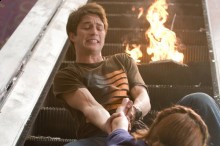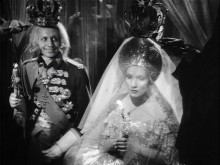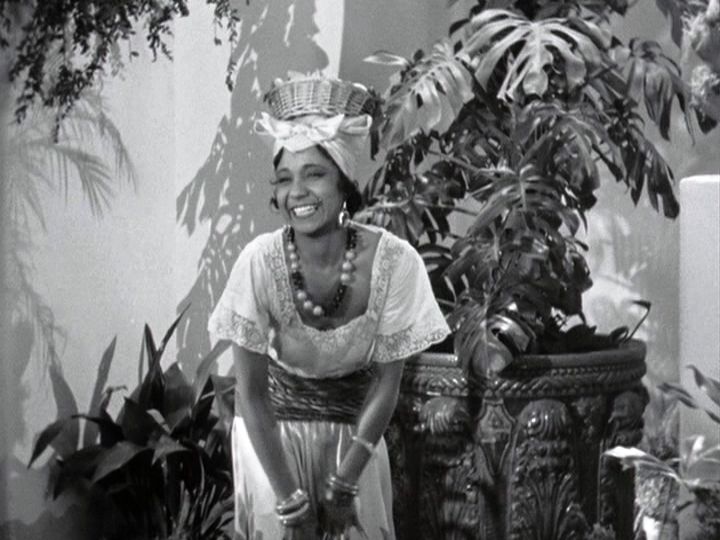In theaters
After last week when nothing opened, we’re looking at four new movies coming our way this week—as well as the return of World Cinema and the Hendersonville Film Society. Assuming you’re prepared to cross the frozen tundra we seem to have turned into (I think a reindeer just went by my window), that affords you six possible movies this week that weren’t here last week. Now, just how many of those are actually worth your while is another matter altogether.

Of the films opening in theatrical venues, the only one I’ve seen is The Imaginarium of Dr. Parnassus, which comes to the Carolina this Friday. My review of it will appear in this week’s Xpress, but I’ll go ahead and say that if you’re a fan of Terry Gilliam, it’s a must-see. Others may simply find it of interest as Heath Ledger’s final film. In either case, it’s undoubtedly the most unusual film coming out this week. It’s also the most challenging—as well as the one most likely to polarize viewers. That makes it kind of interesting.

The others are in the unknown-quantity department, but as I noted in last Friday’s Screening Room, they’re at least of more potential interest than what usually comes our way in the post-holiday doldrums. We have horror (Daybreakers), romantic comedy (Leap Year) and something purporting to be teen-angst satire (Youth in Revolt). For me, the most interesting is probably Daybreakers, despite the fact that its plot—about a world of vampires where the food supply is running out—has an air of the familiar about it. Maybe it’s the better-than-average cast—Ethan Hawke, Sam Neill, Willem Dafoe—or maybe it’s just the fact that it’s an apparently seriously intended vampire picture that wasn’t afraid of an R rating.
Leap Year, on the other hand, has more than an air of the familiar. It has the air of something that—to use that venerable phrase—has molded and haired-over. That it was written by the team that penned Made of Honor is not inspiring. I’ll see it because it has an interesting director, Anand Tucker (When Did You Last See Your Father), and it stars Amy Adams. Otherwise, you’d need a mine-sweeper to locate my expectations here.

Youth in Revolt could go either way. The slight charm of Michael Cera’s patented nebbish character has gone from slight to nonexistent for me. (Last year’s Paper Heart would have done that on its own. That it followed the previous year’s Nick and Norah’s Infinite Playlist makes it a case of wanting the gun used for bringing down the really big game.) But the script here has possibilities—especially in that it may afford Cera the chance to make fun of his established screen persona. That the filmmakers went for the R rating instead of copping out for the PG-13 demographic is also encouraging. We’ll see.
It was nigh on to 40 years ago that I first read about René Clair’s Under the Roofs of Paris (1930), and I’ve owned a copy of it for at least five years now. I didn’t get around to actually watching it till two days ago—and then only so I could review it for this Friday’s World Cinema. A rather long review of it will appear in the online edition of the Xpress tomorrow. For now, I’ll just say I’m very sorry it took me so long to catch up with the film.

Of course, the two big-deal movies—Sherlock Holmes and Avatar—are still with us. But there’s other fare still out there that’s also worth your while—like The Young Victoria, Up in the Air, Previous and, somewhat remarkably (given its fairly lackluster box office), The Road. It’s worth noting, too, that bringing Fantastic Mr. Fox back to the Carolina must have been a good idea, since it’s being held over this week. If you haven’t seen this one, you really should. Also, Asheville Pizza and Brewing is keeping Pirate Radio in the 10 p.m. slot for another week.
On DVD

Another slack week in the DVD realm. In fact, I think only two of the mainstream releases actually played in theaters. The first is The Final Destination (which would have been Final Destination 4, except they opted to put a “the” in front of it instead). It’s very much in the same vein as its predecessors, though it is perhaps the only movie ever made that features a man-eating escalator—if you care for that sort of thing. Well, there’s also Cloudy With a Chance of Meatballs. I can’t say I actually liked this movie, but I will say that I was surprised by not only its oddness, but the fact that it’s full of innuendo, which may or may not have been intentional.
Notable TV screenings

The Scarlet Empress Wednesday, Jan. 6, 8 p.m., TCM
TCM is taking a look at how Hollywood depicted Russia over the years and their first choice is Josef von Sternberg’s The Scarlet Empress (1934) with Marlene Dietrich as Catherine the Great. I’m not at all sure that this magnificent essay in excess has even the slightest relevance to how Hollywood depicted Russia, since this is Russia as only Sternberg imagined it—or could have imagined it. In the mind of Sternberg, Russia is some kind of weird nightmare world filled with grotesque statuary that he somehow equates with pioneer America. That’s why the film’s first empress is played by Louise Dresser as a crude, outspoken American, and why the palace is a cross between a palace and the world’s biggest log cabin. How big is it? Well, it has huge doors that somewhat inconveniently require several people to open and close them. Catherine’s betrothed, Grand Duke Peter, is played by Sam Jaffe (looking like a maniacal Harpo Marx) as a vicious half-wit with a penchant for boring holes through walls to spy on people. Dietrich’s Catherine sleeps her way through the army (just watch where her eyes go when she reviews a line of soldiers) in order to gain power and take the throne. Sternberg called the film “a relentless excursion in style,” and it’s certainly that (wait till you see Catherine and assorted soldiers on horseback ride up the interior steps of the palace to take the throne room)—largely played out to an assortment of music by Wagner and Tchaikovsky (that Sternberg insisted on conducting himself). It rates an unqualified “Wow!” Is there any point to it all besides pure style? Not that it matters much, but, yes. Look at the final image of Catherine in power; her face says it all. She’s become just as crazy as Peter.

Flying Down to Rio Saturday, Jan. 9, 10 p.m., TCM
Thornton Freeland’s Flying Down to Rio (1933) is a frequent visitor to TCM because it’s the first film to feature—but not star—Fred Astaire and Ginger Rogers. It’s certainly noteworthy for that, but take a look at it as a movie in its own right. The film is a delirious riot of clever scene transitions and camera tricks. Plus, there’s the amazing and bizarre “Flying Down to Rio” production number with girls (largely in see-through blouses) on the wings of airplanes—even Busby Berkeley never thought of this. But there’s yet another side to the film—its sound track. Listen to it carefully and take note of the fact that it’s one of the few films where the instruments are played in the flat-out style of “hot jazz” before the sound was smoothed out and made more “sophisticated.” And there’s the absolutely terrific Etta Moten coming out to sing “The Carioca.” Who is Etta Moten? Well, she only made two movie appearances—this one and as the blues singer who tackles “Remember My Forgotten Man” in Golddiggers of 1933 the same year. Both will make you wish she’d been in more movies.




Ken will you be doing any lists, best of 09 or best of the 00’s?
Ken will you be doing any lists, best of 09 or best of the 00’s?
Yes. We — Justin and I — did separate 10 best/10 worst lists for 2009, has appeared on the front page of the Xpress site since you posted that question.
We also collaborated on a 100 best of the decade, which I am still pulling together at this moment.